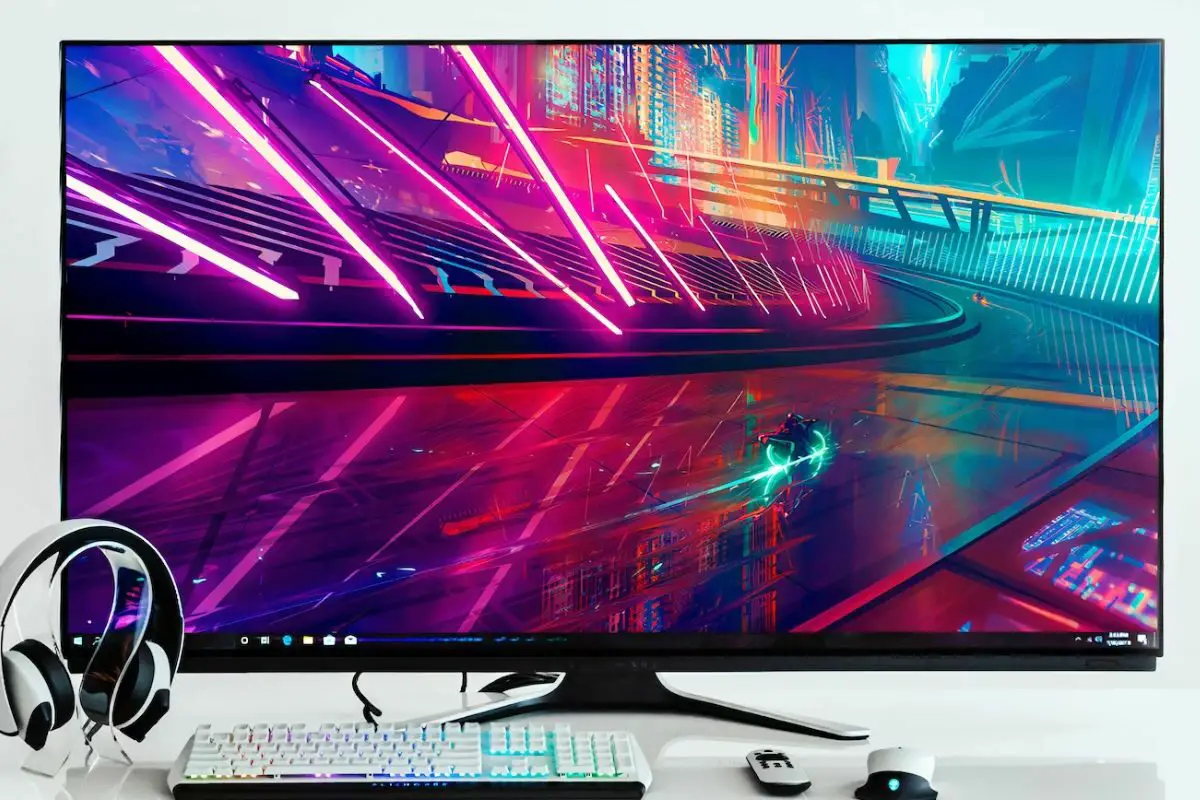
HDR stands for High Dynamic Range and put simply, it is a display specification that allows for brighter whites and deeper black levels (basically, a higher contrast ratio). HDR monitors meet this standard, which gives them high brightness levels, deep blacks, and along with this, more vibrant colors.
When shopping for a display, whether it is a TV or computer monitor, you might see some higher-priced options that are advertised as HDR monitors. I've had many questions about these because while people know about HDR for photography, they end up confused as to how it applies to a screen. In fact, my friend was buying a monitor not too long ago and wanted to know whether he should go for an HDR monitor.
So, if you've been wondering, what is an HDR monitor, this article is the perfect place for you to be. Let's dive into the answer in full detail.
Contents
Before we can get into what HDR monitors are, let's talk about the HDR format. But before we can talk about what HDR is in full detail, let me talk about SDR first.
Dynamic range can be thought of as the range between the brightest and darkest parts of a picture. SDR stands for Standard Dynamic Range and it is basically the brightness and color standard we have been used to for years.
While SDR monitors and content sufficed for decades, there was still more that could be done to improve the detail that you could see in bright and dark scenes without over or underexposing.
This means that you can show very bright objects in a dark scene without needing to overexpose the entire image. The black levels will still be maintained, which makes for more accurate content.
This is where high dynamic range, or HDR, comes in. It allows an image to have a very bright part while also having a very dark part, with a lot more detail being preserved compared to SDR.

HDR monitors are any computer monitors that follow all the specifications set for any of the various HDR formats out there.
To use HDR with your computer, you need to make sure that the monitor, graphics card, and CPU all support it. Then, the game or video content that you want to enjoy has to support it as well.
There are many specifications for HDR in the market right now, developed by different bodies. While this helps the high dynamic range technology develop faster, it can also make the market tough to navigate.
It can be confusing, but it is important to know that a format like HDR10 is basically a communication protocol. GPUs, cables, and displays that support HDR have the potential to push HDR content to a display. But just because it does, doesn't mean that the HDR monitor you're using will faithfully reproduce to HDR standards visually.
This means that the HDR performance of monitors can differ. Many monitor manufacturers may end up labeling devices as having HDR support, but the actual visual experience doesn't reflect that.
The best way to make sure that you get a true HDR monitor, one that will actually meet your expectations when using it, is to make sure that it is VESA-certified. The VESA DisplayHDR certification requires at least HDR10 support but also includes the actual quality of the HDR display when it is in front of you.
There are different levels of certifications from VESA, but you can check to see whether the HDR monitors you are considering have been certified.
HDR comes in many formats. Each of these is different from the next in one or more technical aspects.

Let's start by talking about the most popular HDR formats:
While there are many more of these, these four are the major formats that you need to know. The rest are not used as frequently.
If your HDR monitor is DisplayHDR certified, there are various levels of certification that it might find itself in.
For each level, VESA will test how monitors display HDR content, assessing the minimum peak luminance, maximum black level luminance, the range of color, the kind of local dimming it uses, and more criteria. How it fulfills these criteria will determine which class it falls into.
The VESA DisplayHDR Certification is made up of the following classes:
The numbers after each class represent its peak luminance. The True Black class is distinct though because unlike DisplayHDR 1400 which reaches minimum black levels of 0.02 cd/m2, True Black-certified screens go to 0.0005, which is the lowest that instruments can measure.

The advantage of a monitor that can display HDR content is simple. You get much better image quality and a better viewing experience.
You will be able to enjoy brighter colors and darker blacks, and the higher you climb up the VESA DisplayHDR table, the better your HDR experience.
If you're an avid gamer, looking at HDR gaming monitors is definitely a move that I'd recommend. This is especially true if you already have a high-end gaming system. An HDR gaming monitor is the easy next step to improving the visual quality of your games even further.
However, before you can jump into HDR gaming, you need to have HDR games. Not all games have HDR support, and for some that do, you might need to switch it on in the settings.
If you've got an HDR display, the next thing you should do is figure out where you can find content like shows and movies that support HDR.
A lot of popular streaming services have HDR video content. For instance, Netflix, Prime Video, Disney Plus, Apple TV Plus, and more.
If you have an HDR gaming monitor, consoles like the Xbox Series X and PS5 have HDR support, so you can get the most visual out of the games that you play.
Of course, many PC games support HDR as well.
An HDR monitor is one that supports HDR technology and allows your screen to achieve a high contrast ratio on each image — higher than what you can get with an SDR TV. This means bright highlights, darker blacks, and more vibrant colors.
However, most HDR monitors use HDR10, a free standard, which means that a lot of PC monitors that supposedly have HDR may not give you the visual experience. The best HDR monitors are certified under the VESA DisplayHDR certification, which makes it possible to tell just from the specifications, whether the monitor you're about to buy will offer amazing image quality.
Was this article able to tell you everything about HDR display technology and let you know all the pitfalls when it comes to buying a monitor that supports it? If so, take a look at our related articles to learn a lot more.
